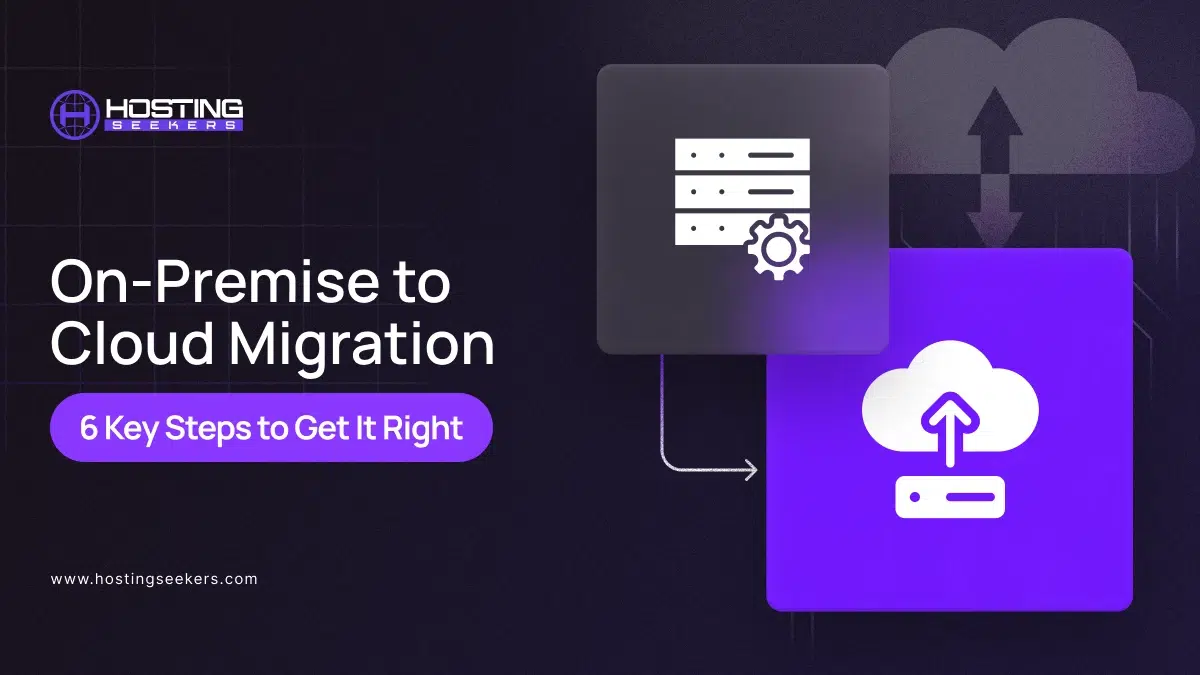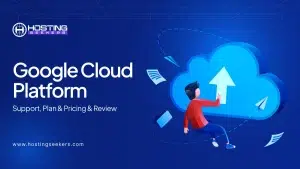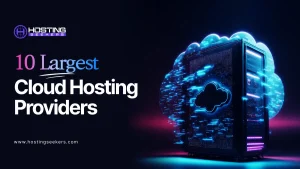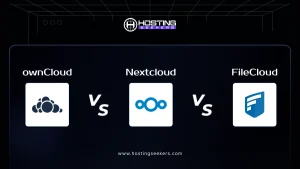
On-premises to Cloud Migration
Cloud Industry Updated on : July 15, 2025Cloud Migration is moving your business data, apps, and IT services into the cloud. As an organization, shifting from on-premises to cloud can be daunting.
On-premises cloud migration of network management enables organizations to achieve enhanced network visibility, centralized control, scalability, and cost efficiencies. Let’s examine the various factors and processes of on-premises to cloud Migration and discuss the challenges you will face when switching from one premise to the cloud.
On-premise to Cloud Migration: The Fundamentals
On-premise cloud migration means transferring data hosted in your in-house data center or infrastructure to a cloud-based environment. For example, if an organization stores all its client data and operates its apps on a physical server in its office, this can be stated as an on-premises data center.
The business plans to implement a cloud migration strategy, shifting its apps and data from an on-premises architecture to the cloud. However, not all workloads benefit from operating on cloud-based infrastructure, so validating the most effective way to prioritize and shift apps before going live is vital.
The company has decided to move everything to an IaaS cloud provider to improve performance and reduce maintenance. Moving data and applications to the cloud is called cloud migration.
Cloud Migration Stats
- More than 90% of organizations use the cloud.
- About two-thirds of respondents currently run in a public cloud, 45% utilize a private cloud, and 55% still depend on traditionally managed on-premises systems.
- 48% plan to switch at least half of their apps to the cloud next year.
- 20% intend to move all their apps to the cloud.
(Source: CloudZero )
Types of Cloud Migration
1. Rehosting
Rehosting includes shifting apps and data from on-premises infrastructure to the cloud without making a vital change to the architecture. It offers quick migration and minimal distractions.
2. Refactoring
It is also known as rearchitecting, which involves modifying the app’s design and architecture to enhance cloud-native capabilities. Although it requires more effort, it provides the highest flexibility, scalability, and cost optimization.
3. Replatforming
Replatforming is a process between rehosting and refactoring. It involves making changes to an app while keeping some of its other core elements. It also refers to moving, improving, or revising. A standard instance may be modifying how an app interacts with the database. Replatforming can involve migrating from on-premises infrastructure to IaaS or moving to a PaaS service.
4. Repurchasing
Businesses may replace their existing apps with commercial off-the-shelf (COTS) software available in the cloud. This strategy can save development time and costs but may require personalization to meet particular business needs.
5. Replacing
In this migration strategy, data is collected from existing on-premises apps and shifted to cloud-based software-as-a-service (SaaS) apps developed and created by third parties, while original in-house apps are deleted.
Benefits of Migrating to the Cloud from On-premise
1. Cost Efficiency
With cloud services, you can shift from a CapEx model, where you invest heavy money in data center infrastructure, to an OpEx model, which pays as you go for the IT services you utilize. This results in cost savings as you don’t need to invest in physical data center infrastructure and update your on-premises hardware. Moreover, most cloud providers have cost optimization tools and recommendations to ensure you use resources effectively.
2. Improved Performance and Agility
The ability to operate apps anywhere isn’t as valuable if they operate slowly or do not function properly. This is less likely to happen when workloads migrate to the cloud from on-premises infrastructure, as the major CSPs have cloud data centers worldwide to decrease delays. Also, Cloud migration makes it much easier for growing businesses to adjust and add resources as required.
3. Disaster Recovery and Business Continuity
A cloud-based system offers robust disaster recovery abilities, ensuring your data is safer and can be restored immediately during a disaster. This plays a vital role in business continuity planning.
4. Security
Cloud platforms have robust security measures, such as strong access controls, advanced encryption, and ongoing security intelligence monitoring. Also, cloud platforms like Google Cloud, Microsoft Azure, and Amazon are developed and designed with security at their core, providing features like security analytics and periodic updates.
5 Steps for a Successful Cloud Migration from On-premise Infrastructure
Well, there are reports that 1 in 3 enterprise cloud migrations fail. So, to ensure successful cloud migration includes a strategic approach. With meticulous planning, you can avoid obstacles and ensure a smooth migration from On-premises to clouds. Let’s discuss the vital steps you must consider for a seamless cloud migration process.
1. Planning is Key
Divide your migration plan into phases. Decide what you want to migrate to first. This will tell you how feasible it is to shift to the cloud and inform you of any loopholes in your process without impacting mission-critical apps and data. This is also the step where you must decide whether you want a single or multi-cloud approach.
You must also assess your on-premises systems, including apps, servers, and dependencies. Analyze performance and prerequisites like hardware or software upgrades to ensure a smooth migration to the cloud.
2. Select the Right Cloud Provider.
While several cloud server providers may provide the services you need, finding the one that aligns with your requirements is vital. So, select the ones that offer the appropriate combination of features. Check for compliance, scalability, or disaster recovery options.
3. Manage Security
Specific Industries have stringent data protection needs, but everyone has to comply with the general regulations of their jurisdictions. Ensure you have security measures, like firewalls, data encryption, and identity.
You also need a plan for transferring sensitive data during the migration process. Once your migration process is completed, you may need monitoring tools to manage your security events.
4. Test and Execute your Migration
Testing and verifying the migration process is crucial before completing the final migration. This will decrease your risk when you migrate and enable you to refine your tools, plans, and timelines.
Once you have tested, refined, and verified your plan, start migration in phases. Ensure you start with minor changes, beginning migration with small files and data to avoid distractions. You can use automated tools provided by your cloud provider to help you move data effortlessly, but you can also monitor your progress carefully and address any issues immediately.
5. Optimize Post Migration
Once the migration is completed, it doesn’t mean that the apps and workloads will perform seamlessly as you expected. You must thoroughly examine all the apps and workloads to ensure everything works as intended. If you are completely migrating, then you must test your cloud environment. Conduct regular audits to ensure your systems are secure and compliant with regulatory requirements.
Challenges You Will Face During the Migration and How to Overcome Them?
There are more benefits to moving from On-premises to a cloud platform. But during this process, you may face challenges and need to know where things can go wrong. The good thing is that these challenges can be resolved during the planning stage. Let’s walk through the challenges you may face during the migration process.
1. Budget Management
Migration from on-premises to the cloud may include hidden charges not mentioned in the plans. Additionally, costs like data transfer fees or operation costs can add up, so always decide on the total cost of ownership (TCO) before you decide to shift the data to the cloud.
2. Handling Legacy Systems During Cloud Migration
Some older applications and systems were built before cloud computing became more common. While many can move to the cloud, careful planning is important. During the early stages of your migration, decide whether these systems should be slightly adjusted (re-platformed), redesigned (refactored), or completely replaced. This helps avoid problems later and ensures everything runs smoothly in the cloud.
3. Data Security and Compliance
Cloud service comes with security features. Some security features are for the cloud infrastructure, not your workflows and data. This is why deploying and maintaining cloud FWaaS is vital for your cloud resources and any on-premises infrastructure you support.
Summing Up
Cloud Migration is the most demanding and popular strategy for enterprises that wish to optimize their business operations, enhance agility, and decrease costs. Cloud Migration comes with a plethora of benefits that make migrating data to the cloud easier for most businesses. A good strategy can ensure smooth cloud migration and boost your business’s productivity.
Frequently Asked Questions
Q1. What is the difference between cloud migration and On-premises?
Ans. The main difference between Cloud migration and on-premises is that Cloud services are managed and hosted by cloud services providers, or as you may also call them, hosted by third-party providers. In contrast, On-premises, the systems are installed and managed by the business on its hardware.
Q2. What is On-premises cloud migration?
Ans. Simply, shifting data from an organization’s data center to the cloud infrastructure is known as on-premises cloud migration.
Q3.What are the types of cloud migration?
Ans. The types of cloud migration include rehosting, refactoring, replacing, re-platforming, repurchasing, retiring, and retaining.
Q4. How do I move my on-premises database to the cloud?
Ans. To move your on-premises database to the cloud, follow these basic steps:
- Plan the migration (including downtime and data integrity checks).
- Choose a cloud provider and an exemplary database service.
- Manage and check the security features.
- Test thoroughly after migration to ensure everything works properly.
Q5. What is a critical step in migrating an on-premises application to the cloud?
Ans. A critical step is assessing and preparing the application for compatibility with the cloud. This includes checking dependencies, performance needs, data handling, and security requirements. Planning whether the app will be lifted as-is, slightly modified, or rebuilt is also key to a successful migration.
Q6. What are cloud migration tools?
Ans. Cloud Migration tools ensure a smooth migration process by automating tasks, ensuring data integrity, maintaining security, and reducing downtime.




